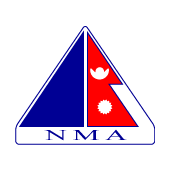Overview of Everest Base Camp Budget Trek
Are you ready for the adventure of a lifetime while keeping your wallet intact? Look no further! The Everest Base Camp Budget Trek offers the opportunity to conquer the legendary Himalayas without denting your finances. With its incredible scenery, cultural experiences, and affordable pricing, this trek is a true adventure seeker's dream come true.
Adventure on a Dime: The Secrets to Affordability and Unbeatable Inclusions of the Everest Base Camp Budget Trek
The Everest Base Camp Budget Trek is designed to make your Himalayan dreams a reality without straining your finances. Here's how it does it:
Affordable Accommodation:
While you'll enjoy comfortable teahouse lodges, these are wallet-friendly compared to luxury accommodations.
Local Guides and Porters:
This trek includes the services of experienced local guides and porters, ensuring your safety and comfort while supporting the local economy.
Economical Dining:
Most meals are included, saving you the hassle of searching for food and providing you with a taste of local cuisine.
Group Discounts:
The more, the merrier! Group treks offer additional cost savings, making it a fantastic option for friends and solo travelers alike.
Unlock the Himalayan Adventure: Discover the Everest Base Camp Budget Trek – Your Epic Journey at Unbelievable Rates!
The Everest Base Camp Budget Trek package typically ranges from $1,200 to $1,800 per person. The cost can vary based on factors such as group size, trek duration, and inclusions. Keep in mind that this budget-friendly option does not compromise on the quality of your experience.
Epic Moments Unveiled: The Pinnacle Experiences of the Everest Base Camp Budget Trek!
Spectacular Scenery:
Enjoy breathtaking views of the world's highest peaks, including Mount Everest, Lhotse, and Nuptse.
Cultural Immersion:
Interact with the friendly Sherpa people and visit monasteries that hold centuries of history and tradition.
Thrilling Adventure:
Trek through the rugged terrain, cross suspension bridges, and conquer the challenging Kala Patthar viewpoint.
Everest Base Camp:
Stand where legendary mountaineers prepare for their ascents, an experience that few can claim.
Incredible Flora and Fauna:
Discover the unique Himalayan ecosystem, including rare wildlife and vibrant rhododendron forests.
Map Route of the Trek:
[ Kathmandu- Lukla- Phakding- Namche Bazar- Rest in Namche- Tengboche- Chhukung- Lobuche via Kong La Pass- Everest Base Camp via Gorakshep- Return to Gorakshep- Hike to Kala Patthar-return to Pheriche-Tengboche- Namche Bazaar-Lukla- Kathmandu]
Best Season to Trek Everest Base Camp:
The best seasons for the Everest Base Camp Budget Trek are spring (March to May) and autumn (September to November). During these times, the weather is clear, and you'll enjoy moderate temperatures, making it an ideal time to trek.
What Will Comprise in This Budget-Friendly EBC Trek:
Your budget-friendly package includes:
Airport Transfers: Arrival and departure transfers in Kathmandu and Lukla.
Accommodation: Teahouse lodging along the trekking route.
Meals: Most meals during the trek (breakfast, lunch, and dinner).
Permits: Sagarmatha National Park and TIMS permits.
Guides and Porters: Experienced local guides and porters.
Internal Flights: Round-trip flights between Kathmandu and Lukla.
First Aid: Basic first aid supplies for your safety.
Package Cost During Peak Season and Off-Season:
- Peak Season (Spring and Autumn): The cost typically ranges from $1,500 to $1,800 per person.
- Off-Season (Monsoon and Winter): The cost may be as low as $1,200 per person during the off-season, offering a great deal for budget-conscious trekkers. However, be prepared for challenging weather conditions.
Suggestions:
Fitness Preparation: Prepare physically and mentally for the trek to ensure an enjoyable experience.
Packing List: Make a comprehensive packing list to ensure you have all the necessary gear and clothing for varying weather conditions.
Acclimatization: Follow the acclimatization schedule to reduce the risk of altitude sickness.
Travel Insurance: Invest in travel insurance that covers high-altitude trekking and medical emergencies.
Responsible Trekking: Respect the local culture, environment, and wildlife during your journey.
Whether you're a seasoned trekker or a novice, this budget-friendly package of Everest Base Camp is designed to provide you with an unforgettable experience in the lap of the world's highest peaks.
Don't miss your chance to embark on this epic journey - book your Everest Base Camp Budget Trek today and make memories that will last a lifetime.



























